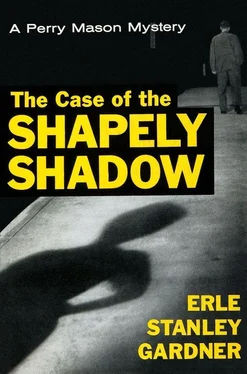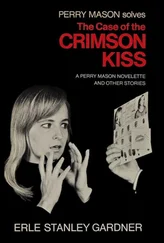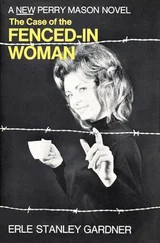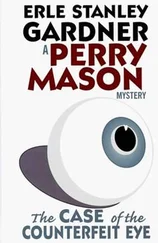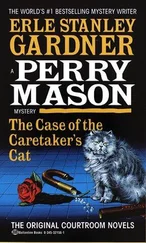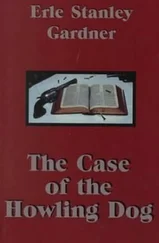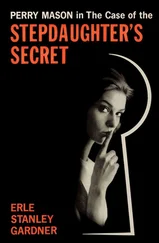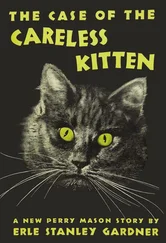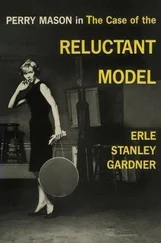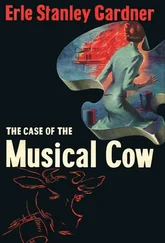The witness demonstrated each moulage in turn.
“We would like to have all of this material introduced in evidence,” Ruskin said, “as People’s Exhibits J-i, J-2, J-3, J-4 and so on, putting a number on each exhibit and having all of the moulages under People’s Exhibit J.”
“No objection,” Mason said.
“Cross-examine,” Ruskin said.
“I take it,” Mason said to the witness, “that in making all of these casts and moulages and models you used the greatest care to see that there was no error in measurement?”
“That is true,” the witness said.
“When the tires were on the ground, there was a pressure of several hundred pounds on each wheel?” Mason asked.
“That is correct.”
“And when you made the models of the tires, this pressure was removed from the tires?”
“Well... yes.”
“Then even if the defendant’s tires did make those tracks, the models of the tires should not fit into the moulage of the tracks because of the absence of this pressure.”
“I tried to compensate for that.”
“How did you compensate for it?”
“I partially deflated the tires and put sufficient pressure on them to duplicate the flattening out that would have taken place if the weight of the car had been on the tires.”
“What standard did you use? How did you determine what number of pounds pressure?”
“I used my judgment.”
“In other words,” Mason said, “you deflated the tires and then you put just sufficient pressure on the tire in the process of duplicating it so that the treads would be sure to fit into these tracks.”
“That is not fair,” the witness said, “nor is it an accurate statement of what I did.”
“But you did take this factor into consideration?” Mason asked.
“Yes.”
“And used your judgment as to how much this factor should influence the resulting models and moulages?”
“In a way, yes.”
“Thank you,” Mason said. “That’s all.”
“Just a moment,” Ruskin said, “I have a question on redirect. Is there anything in the deflation of these tires, or the method which you used, which would alter in any way the tread of the tires?”
“Nothing.”
“That’s all,” Ruskin said.
“I have a question on recross-examination. I will ask the witness if the things he did, did not change the dimensions of the tire.”
“The things I did may have changed the dimensions, but the tread wasn’t altered.”
“You did change the dimensions of the tire.”
“All right, if you want to put it that way,” the witness said irritably. “I changed the dimensions of the tire.”
“Thank you,” Mason said. “I was quite certain you had.”
The jurors exchanged glances indicating a certain amount of perplexity.
Ruskin called the cashier of the bank where Morley Theilman had his account. The banker testified, somewhat reluctantly, that over a period of some three weeks Morley Theilman had been withdrawing money in the form of cash; money which had invariably been withdrawn in the form of twenty-dollar bills; that the withdrawals had amounted to something over a hundred and eighty-seven thousand dollars during the three weeks’ time. That on Tuesday, the third, the decedent had drawn out five thousand dollars in cash in the form of twenty-dollar bills.
“Cross-examine,” Ruskin said.
“No questions,” Mason announced.
“I will call Cole B. Troy as a witness,” Ruskin said.
Troy identified himself as having been interested in several business ventures with the decedent, Morley Theilman, and as having been in conference with Theilman on the evening of Tuesday, the third; he testified that the conference had taken place in Bakersfield; that Theilman phoned his wife about eight saying he would be home around eleven or eleven-thirty, then had left his office about nine o’clock stating that he was driving back to his home in Los Angeles and wanted to be home by eleven.
“And what did you do after Mr. Theilman left the office?” Ruskin asked.
“I paced the floor idly for a couple of turns and wound up standing at the window looking down on the street.”
“Now, I will show you this diagram of the street which shows the location of your office and ask you if that diagram is a correct presentation of the street intersection and the location of your office?”
“It is.”
“Now then, while you were standing at the window, what did you see?”
“I saw Morley Theilman cross to the curb, stand a moment, then walk diagonally across the street.”
“I’m going to put this diagram on the blackboard,” Ruskin said, “and ask if you can mark on there with an X the approximate spot where you first saw Mr. Theilman.”
“Well, it was about here,” the witness said, making a mark.
“Now make another mark X at the point where you saw him hesitate on the curb.”
The witness made a mark.
“Now can you make a line indicating the direction which Mr. Theilman took in crossing the street on a diagonal?”
The witness made the line on the sketch.
“And then what? Just what did Mr. Theilman do? Make a line to indicate his motions after he crossed the street.”
“Well,” Troy said, “he crossed the other sidewalk on a diagonal to the corner, then walked around the corner. After that I was unable to see him because of the building on the opposite corner.”
“You continued to stand at the window?”
“I did.”
“And what did you see after that, if anything?”
“Within a matter of seconds after Theilman had started across the street,” Troy said, “I saw the shadow of a woman.”
“You first saw the woman’s shadow?”
“Yes.”
“That was before you saw the woman herself?”
“Yes.”
“Did you notice anything about that shadow, anything that was peculiar?”
“It was a very shapely shadow; that is, the shadow itself intrigued me because it appeared to be cast by a young woman who was... well, shapely.”
“But you could only see her shadow at that time?”
“That’s right.”
“And where was that shadow?”
“It was cast by a street light at the corner. The woman was out of my sight but from looking down overhead I could see the shadow.”
“Will you indicate on the diagram about where this shadow was?”
The witness indicated.
“Now, did you ever see this woman?”
“Yes, I did.”
“When?”
“Well, when Mr. Theilman was... oh, approximately halfway across the street.”
“And what happened then?”
“The woman moved out of the shadows and stood almost directly beneath my window.”
“You couldn’t see her clearly at that point?”
“No, just her head and shoulders.”
“Then what?”
“Then, as Mr. Theilman crossed the street, she moved along behind him.”
“How far behind?”
“I would say... oh, about twenty feet.”
“And you could see her more clearly at that time?”
“Certainly. As she moved off the sidewalk I got a very good view of her back.”
“Can you describe her?”
“She was, I would say, a young woman; that is, probably under thirty. She was well formed and she wore... well, it was some kind of a rather tight-fitting skirt or dress. I can’t remember exactly how she was dressed except I noticed she was — well, she lived up to what I had expected from looking at her shadow.”
“And you continued to watch her?”
“Yes.”
“For how long?”
“Until she was out of sight.”
“And where did she go?”
“She followed the exact course taken by Mr. Theilman.”
“You may inquire,” Ruskin said, turning to Perry Mason.
Читать дальше
